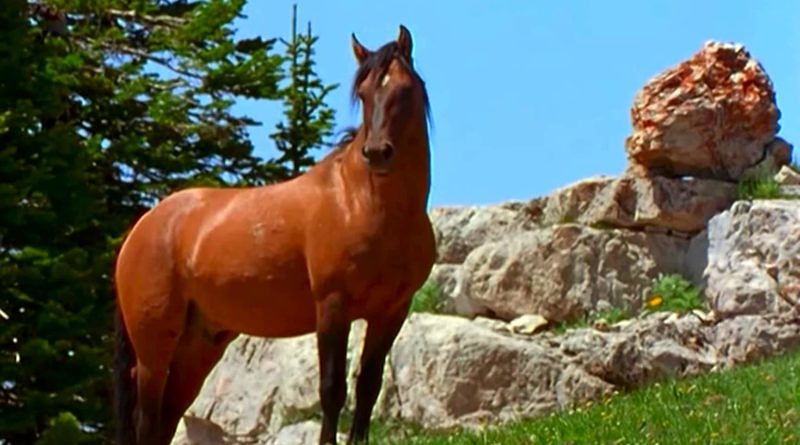Horse owners beware: This tree could kill your horse
If you’re anything like me, when you saw the first signs of moulting on your horse and realised winter was finally coming to an end, you were positively overjoyed. But spring comes with its own problems and one of those is sycamore poisoning.
Atypical myopathy is a serious condition in horses brought on by eating sycamore. Most cases in the UK are reported in the autumn but a few also occur in the spring. Please share this post to inform other horse owners so that they too can be vigilant at this time of year.
Symptoms
The symptoms of atypical myopathy include:
- Muscle soreness
- Stiffness
- Muscle tremors
- Weakness
- Lethargy
- Sweating
- Fast or laboured breathing
- Reluctance to move
- Red or brown urine
- Depression
- Fast or irregular heartbeat
- Sudden death
Horses affected by the condition have about a 50% chance of survival at best so it is a very serious problem. Sometimes mortality rates can reach 100% so don’t ignore the problem if you suspect it. Contact your vet immediately.
Sycamore Poisoning
Atypical myopathy is caused by a toxin called hypoglycin A which affects the horse’s muscles. This is found in large concentrations in sycamore seeds (“helicopters”). But it is also present in the leaves of the tree and may be present in seedlings as well.

European sycamore (Acer pseudoplatanus) is the main culprit and belongs to the Acer family of trees. Other species in this family may also pose a risk, including a number of ornamental maples species. However, Acer campestre, also known as ‘field maple’ and common in hedgerows is not known to produce the toxin so don’t panic if you have some of this near your horses!
Diagnosis
Atypical myopathy can be difficult to diagnose in its early stages but a number of diagnostic tests exist. One of the most concrete signs is red-brown urine. The dark urine is caused by the presence of myoglobin. Myoglobin is normally found in muscle and is what makes muscle red. When the muscles are damaged, some of this myoglobin is released into the bloodstream. It is then filtered out of the bloodstream and into the horse’s urine by the kidneys, turning the urine a red-brown colour. If a horse has recently grazed near sycamore trees, is showing some symptoms of atypical myopathy, and has red-brown urine, there is almost no question that they are suffering from sycamore poisoning.
Treatment
Horses with a atypical myopathy should be hospitalised for effective treatment as soon as poisoning is suspected. If this is not done immediately, it can become difficult to transport the horse and provide appropriate care. Horses need to be given fluids to prevent kidney damage and dehydration. There is also evidence that administering certain vitamins and minerals can help. Strong painkillers are important as it is a very painful condition.
Though mortality rates can be very high, those horses that do recover usually do so fully and can go back to work with no long-term effects.
Your vet will be able to talk you through treatment and recovery but of course the best ‘cure’ is prevention!
Prevention
There are a few things you can do to help prevent sycamore poisoning:
- Identify any sycamore trees and fence off the trees and the area where their seeds fall
- Search your paddocks regularly and remove any seeds, leaves or seedlings
- Reduce turnout time so horses are less likely to ingest toxins
- Provide ad lib hay so the horses have a constant supply of food and are less likely to ingest sycamore
- Reduce the number of horses you turn out so there is more grazing per horse
If one horse is found to be affected it is very important to immediately stable or move any other horses that were in the same area and have them tested for poisoning. Atypical myopathy can sometimes only produce mild symptoms at first but often becomes worse within the first day or two. It is common for multiple horses to be affected so if one is showing symptoms, don’t delay in getting the others tested!
A bit of a mystery
Despite being quite easy to diagnose, atypical myopathy remains a bit of a mystery. No one is sure how many seeds a horse has to eat to become ill and it seems seeds have variable amounts of the toxin depending on factors that are not yet understood. Older horses also seem less susceptible, suggesting that they might build some tolerance to the toxin over time. Since the level of toxins in different parts or life stages of the sycamore are poorly understood, it is a good idea to try to prevent your horses from eating any sycamore at all.

You can find more information on atypical myopathy here and here or contact your vet with any questions. Many horse owners may be unaware of the risks – share this post if you’d like to help others in your area.






